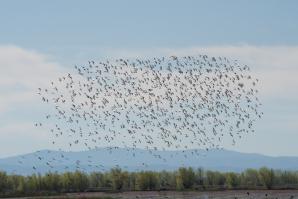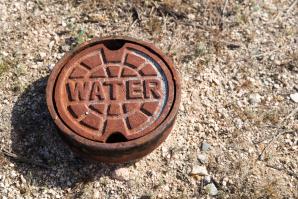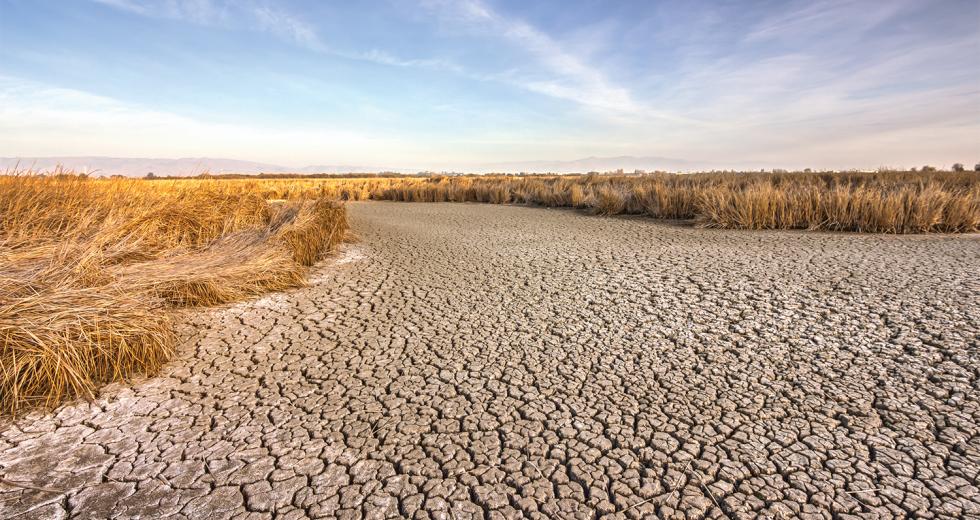California is in the third driest year in more than 100 years of record. Farmers throughout the state are seeing their water use curtailed, some communities are rationing water, and fish and wildlife populations are threatened. California needs additional storage capacity to weather such droughts, and it’s groundwater storage — not surface storage — that will have the greatest impact. Still, storage alone won’t be enough.
California’s aboveground water storage capacity (reservoirs, for example) is more than half as large as the state’s average annual runoff. Likewise, our groundwater storage capacity is nearly double the state’s average annual runoff. But capacity alone does not create supply. Reservoirs and aquifers can only store water if there’s water left to store, so while increasing capacity would add flexibility and value to California’s system, its expense and use may not be justified.
If all the surface-water storage projects currently under consideration were built — at a cost of more than $9 billion — the state’s total storage would increase by less than 10 percent. Water deliveries would increase by even less. Water shortages would be somewhat diminished, but by no means ended.
Groundwater, on the other hand, is of far more importance during long droughts. This year alone, the Central Valley is likely to see an increase in groundwater pumping that exceeds the most water ever delivered by the State Water Project. This additional groundwater use in 2014 also exceeds the total storage capacity of all proposed surface reservoirs. Securing and managing groundwater supplies are the most important priorities for California and always will be.
In the Sacramento region, the management of surface water storage during drought poses some problems, as seen with Folsom reservoir earlier this year before several storms brought relief. The region’s reservoirs have many upstream and downstream demands relating to water supply, fish, hydropower, recreation and flood management. The call to satisfy these demands is likely to increase as the region’s population grows and as climate change reduces seasonal water storage in the snowpack.
So, does this mean that more storage capacity should be built for the region? Well, reservoirs are expensive, and the least costly and most effective locations for reservoirs are already in use. Plus, the benefits of new storage capacity are not infinite. Local governments and stakeholders must weigh their costs and advantages.
Reductions in net water use also are needed. Urban dwellers must cut back on landscape irrigation, and coastal residents must reduce indoor use and reuse treated wastewater instead of sending it to the ocean. Crop irrigation, too, must be decreased statewide in the coming decades, even as crop yields and revenues are likely to drive economic prosperity in the agricultural sector.
Given California’s dynamic economy and hydrology, greater flexibility is needed to better balance water availability and demands and to set proper economic incentives for conservation and water management. Water rights and environmental regulations must be modernized to make them more responsive, effective and efficient. And local areas must be given the financial authority and accountability needed to raise funds for local water management objectives.
California is a dry state with a large population and an immense economy; it also places high value on preserving vestiges of its native ecosystems, including fish and waterfowl. Droughts are inevitable, and the costs of drought-proofing California are akin to the costs of making California earthquake-proof. It is far more economically prudent to manage moderate drought impacts than to build immense reservoirs, costly desalination plants and permanently suppress water demands so that humans don’t feel the impacts of drought.
For such a severe drought year as 2014, it is remarkable how insulated California’s economy is, overall, from its impacts. The drought will cost California several billion dollars in lost agricultural production, lost hydropower production and municipal costs, and it threatens to drive additional fish and wildlife onto endangered-species lists. But in the context of California’s $2 trillion economy, the statewide effects are not catastrophic.
Nevertheless, the drought’s effects will be sizable locally and calamitous for some. The drought also brings our attention to the importance of managing water in California well. It’s an opportunity to move forward on some aspects of California’s water management that have lagged behind changes in the economy and the state’s environmental objectives. Securing groundwater conditions and rights, making environmental regulations more environmentally effective, improving water market effectiveness, and securing local and regional funds to support water management should be four high priorities.
California’s prosperity and environment depends on good water management every year, not just in drought years. We have been successful to the degree that dry years are needed to remind us of this dependence.
Like what you’ve read? Check out our cover story by Russell Nichols, Of Rice and Men, by grabbing a copy of our August issue. You can also sign up for our newsletter, and we’ll let you know when it’s available online.
Recommended For You

Water Foul
The drought is putting in jeopardy efforts to shore up migratory bird populations
Doug Thomas stops his white pickup along the elevated dirt road that carves through the acres of newly planted rice stalks in Wheatland, Calif.
In this scene, replete with a myriad of migratory birds lazily grazing in the green fields, change is soon to come. The landscape, Thomas says, will be transformed into an oasis for waterfowl and shorebirds that will find a man-made wetlands to call home on their annual migration this fall.

Change of Plans
Regional conservation efforts battle dwindling budgets and staff
The future of community growth in the Capital Region hinges on the fate of several habitat conservation plans slogging through the development pipeline.

Got Storage?
California can't conserve its way out of a drought
Years of drought have baked away some of the divisions inside California’s Capitol, drawing opposing parties together in an effort to find solutions to the state’s ongoing water storage and conveyance problems.



